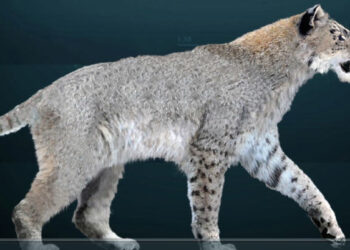January 1, 2024
2 min read
As climate change makes the planet hotter, some animals might become more active at night to escape the midday heat
A collared peccary, close relative of the white-lipped peccary.
gerard lacz/Alamy Stock Photo
The white-lipped peccary, a piglike animal native to Central and South America, usually forages for fruit and other plants during the day and sleeps at night. But scientists in Brazil’s Pantanal wetlands have found that when it gets unusually hot, these animals become more nocturnal. This behavioral flexibility could help peccaries—and potentially other species—adapt to climate change. “Maybe there’s hope for species to be resilient, to an extent,” says Michaela Peterson, a doctoral candidate at Vanderbilt University and coauthor of a recent study published in Biotropica. The study found that during relatively balmy periods, when daily high temperatures were lower than 80 degrees Fahrenheit on average, white-lipped peccaries were most active in the afternoon. In slightly hotter weather they shifted their activity to the morning. But once average daily highs topped 94 degrees F, peccaries were most active after sunset.
Studies have found similar shifts in other species, including giant anteaters and cheetahs. But even though becoming more nocturnal seems like an obvious way to beat the heat, the potential impact of climate change on the timing of animal activity has not been widely studied, says Michiel Veldhuis, an ecologist at Leiden University in the Netherlands, who was not involved in the new research.
These studies looked at how shorter-term temperature fluctuations changed the animals’ behavior, and it’s not certain that any species will become permanently more nocturnal because of climate changes in the long term. Embracing the night life could come with significant trade-offs: Nocturnal predators such as pumas often hunt peccaries and anteaters, and Veldhuis says he would like to test whether…
Read the full article here







